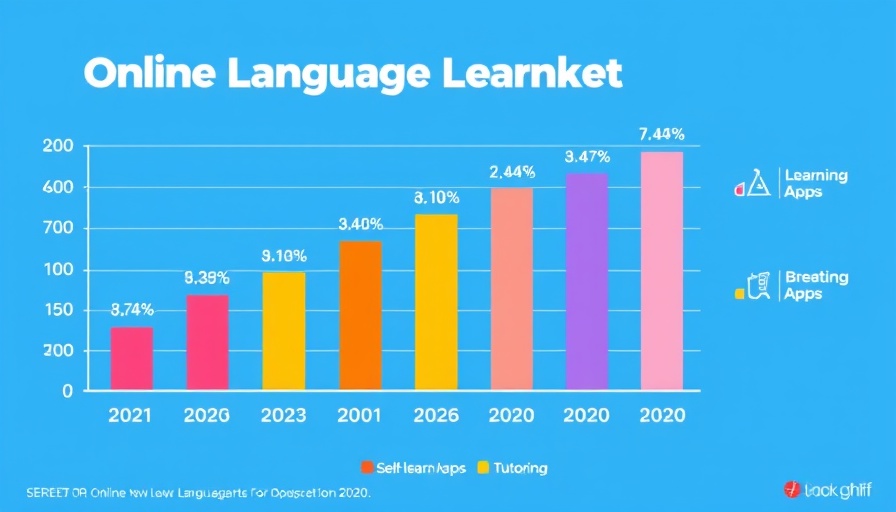
The Growing Demand for Online Language Learning
Language skills are becoming increasingly vital in our interconnected world. As businesses expand globally and educational opportunities reach across borders, parents are keen to ensure their children are equipped with the ability to communicate in multiple languages. The global online language learning market is predicted to explode, with projections estimating its size will reach approximately $22.1 billion by 2024. This significant growth, estimated at a robust CAGR of 16.6% from 2025 to 2030, is driven largely by the dual forces of globalization and technological innovation.
How the Pandemic Reshaped Learning
The COVID-19 pandemic accelerated a shift toward online learning platforms that many parents felt compelled to explore as traditional classrooms closed. Parents found new ways for their children to engage with language learning through self-paced and remote learning tools that offered flexibility and accessibility. The unprecedented circumstances highlighted the need for multilingual capabilities as students out of school turned to these resources.
Technological Innovations Driving Language Learning
Technology plays a crucial role in the evolution of language learning. With advancements like AI-powered language apps—think of platforms like Duolingo and Babbel—parents can provide children with engaging, personalized learning experiences. The self-learning apps segment captured a whopping 64.2% of revenue in this market, indicating a clear preference among users for flexible and on-demand learning experiences.
The Importance of Multilingualism in Today's Workforce
As technology removes barriers and creates opportunities for knowledge exchange, parents may find it imperative that their children acquire a second or third language. The demand for multilingual employees is booming as companies search for individuals who can bridge cultural gaps and navigate global markets. This emphasis on multilingualism means today's children are better positioned for future career success when they are proficient in more than one language.
Making Informed Choices in Language Learning
For parents exploring options, the selection of appropriate tools and platforms is critical. Factors such as learning modes are pivotal; services that allow for real-time interaction, tutoring, or self-learning might all be suitable choices depending on a child's learning style. Parents should also consider their child’s interest in particular languages and cultural contexts, enhancing motivation and engagement.
Building a Language Learning Routine for your Children
Establishing a regular routine for language learning can significantly boost a child's proficiency and retention. Integrating language practice into daily activities, like cooking while learning food vocabulary or playing language games, can create a more immersive experience. Whether through apps, games, or listening to music in the target language, these interactions foster a love for learning.
Conclusions: Embracing New Methods for Language Education
The online language learning market is not just a trend—it's an essential evolution in educational methodology reflecting larger societal shifts. For parents, understanding how to leverage these tools can help position their children for success in a globalized economy. The emphasis on digital engagement, combined with individual needs, ensures that children not only learn a language but also gain the confidence to use it effectively across different contexts.
 Add Row
Add Row  Add
Add 




Write A Comment